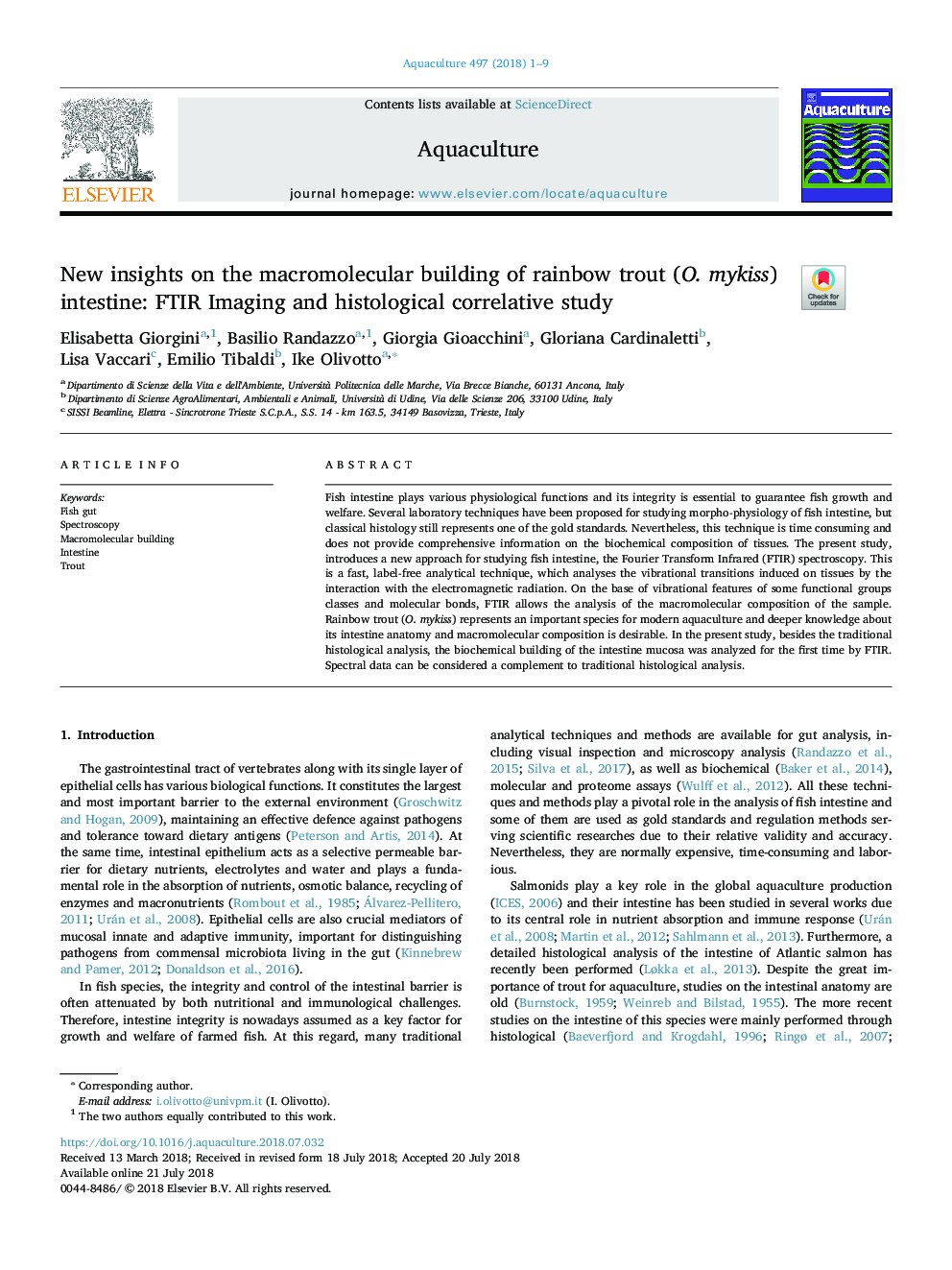| Article ID | Journal | Published Year | Pages | File Type |
|---|---|---|---|---|
| 8492935 | Aquaculture | 2018 | 9 Pages |
Abstract
Fish intestine plays various physiological functions and its integrity is essential to guarantee fish growth and welfare. Several laboratory techniques have been proposed for studying morpho-physiology of fish intestine, but classical histology still represents one of the gold standards. Nevertheless, this technique is time consuming and does not provide comprehensive information on the biochemical composition of tissues. The present study, introduces a new approach for studying fish intestine, the Fourier Transform Infrared (FTIR) spectroscopy. This is a fast, label-free analytical technique, which analyses the vibrational transitions induced on tissues by the interaction with the electromagnetic radiation. On the base of vibrational features of some functional groups classes and molecular bonds, FTIR allows the analysis of the macromolecular composition of the sample. Rainbow trout (O. mykiss) represents an important species for modern aquaculture and deeper knowledge about its intestine anatomy and macromolecular composition is desirable. In the present study, besides the traditional histological analysis, the biochemical building of the intestine mucosa was analyzed for the first time by FTIR. Spectral data can be considered a complement to traditional histological analysis.
Keywords
Related Topics
Life Sciences
Agricultural and Biological Sciences
Aquatic Science
Authors
Elisabetta Giorgini, Basilio Randazzo, Giorgia Gioacchini, Gloriana Cardinaletti, Lisa Vaccari, Emilio Tibaldi, Ike Olivotto,
